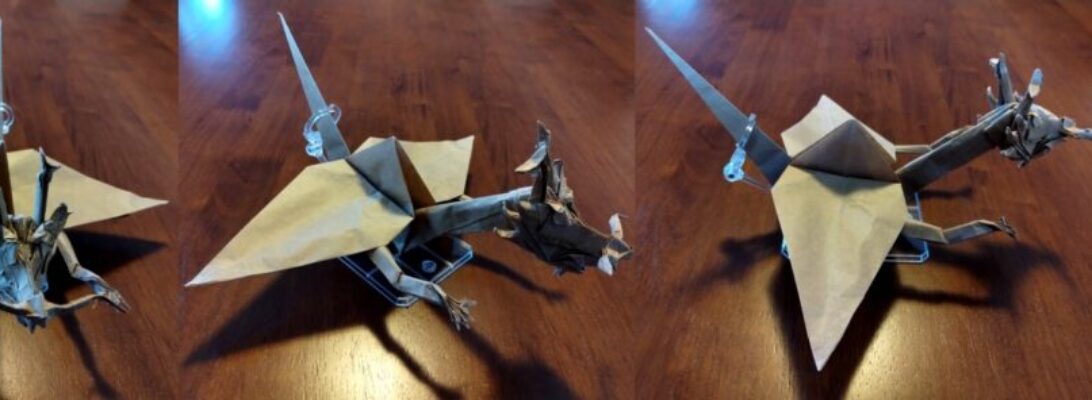To celebrate the release of his lovely new book of modular polyhedra (must get me one), Fergus Currie offered an early morning (for me at least on the opposite side of the planet) workshop on how to fold his second stellation of a cuboctahedron:

I set an alarm, awoke at 1am and folded along with Fergus.
I like this modular a LOT – each vertex is a single piece of paper – it works well with paper that has only one side printed or printer paper. The design is ingenius, the angles odd and exacting but you get into a groove and they make sense in the end.

I went into production line, and using the template to establish the initial odd division, I found that using a fine ball stylus and ruler it was easier to lay in the intermediate creases with the accuracy to make the vertices crisp and accurate.
Once I had 24 units, I then interlocked them in groups of 3 using the narrow tabs and pockets – these interlock really tightly and I could not imagine trying to do these later. I then joined the triples as they tile on longer tab-pocket sets that slide together with a little encouragement. Eventually the units combine to become this wonderful spikey ball with unique geometry.
Continue reading





















